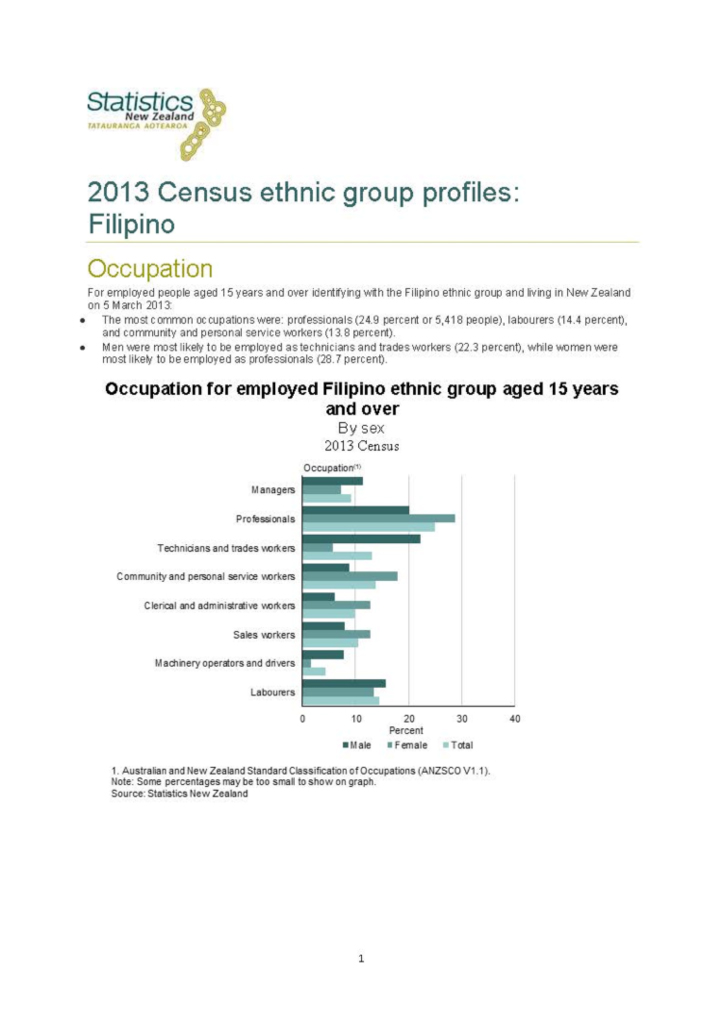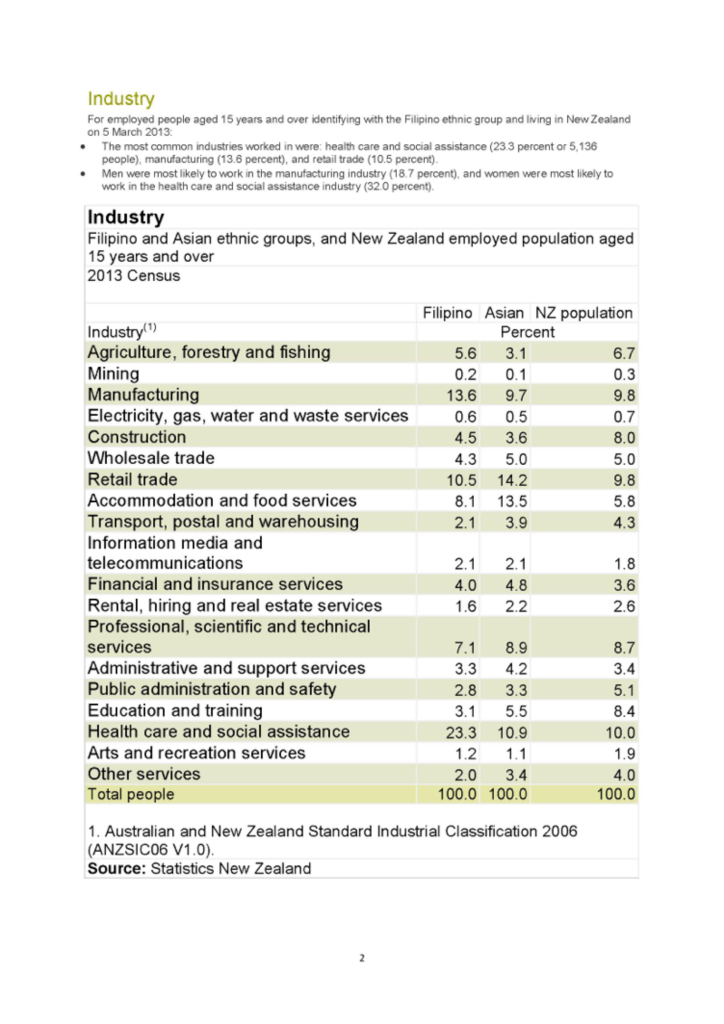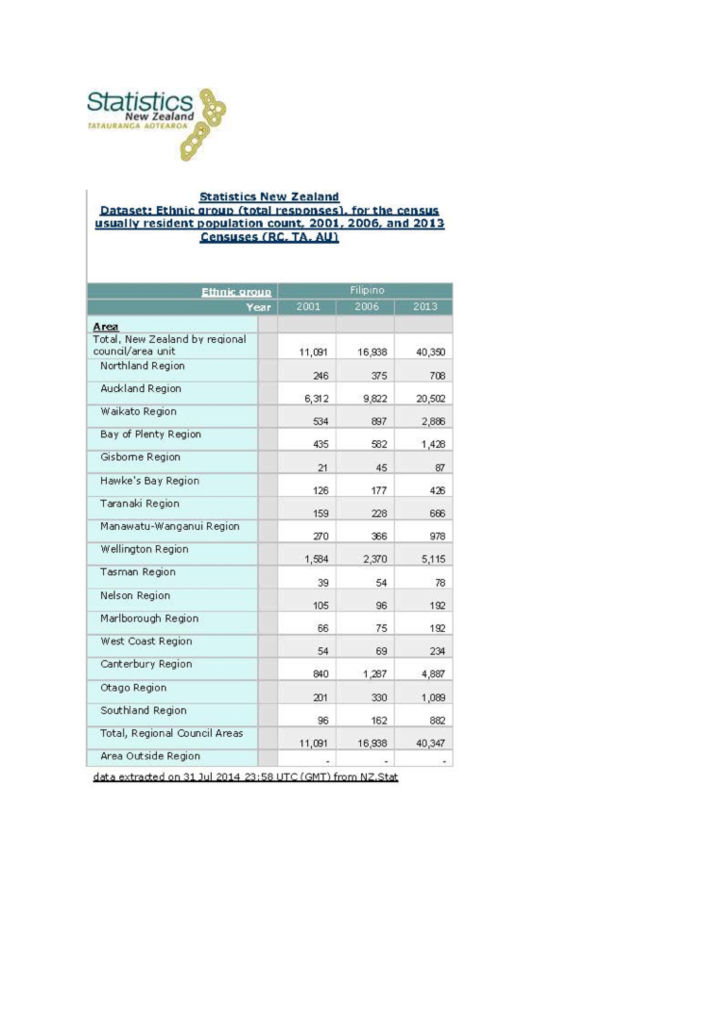Philippine Embassy update on Filipino population in New Zealand



Please be informed that according to Statistics New Zealand’s 2013 Census of Population and Dwellings conducted on 05 March 2013, the total number of Filipinos now in New Zealand comprises 40,347 people or 1.0 percent of New Zealand’s total population. Filipinos rose as the third largest Asian ethnic group after the Chinese and Indian ethnic groups. According to Statistics New Zealand, during the seven-year period between censuses from 2006 to 2013, the Filipino population increased by 138.2 percent. This compares with an increase of 52.7 percent between 2001 and 2006.
For people identifying with the Filipino ethnic group living in New Zealand on 5 March 2013:
- 81.3 percent (32,793 people) lived in the North Island and 18.7 percent (7,551 people) lived in the South Island.
- The majority of Filipinos in New Zealand live in the Auckland Region (50.8 percent or 20,502 people), followed by the Wellington Region (12.7 percent or 5,118 people), and the Canterbury Region (12.1 percent or 4,887 people).
- The Canterbury Region’s main city is Christchurch which is where the majority of Overseas Filipino Workers, as distinct from the permanent migrant/permanent residents, in the area is residing due to the employment opportunities provided by the rebuild and reconstruction of the city.
Of the 30,669 Filipinos aged 15 years and over living in New Zealand on 5 March 2013, 78.9 percent (24,204 people) were in the labor force. 83.5 percent of men and 75.6 percent of women were in the labor force. The most common occupations for Filipinos were professionals (24.9 percent or 5,418 people), labourers (14.4 percent), and community and personal service workers (13.8 percent). Men were most likely to be employed as technicians and trades workers (22.3 percent), while women were most likely to be employed as professionals (28.7 percent).
The most common industries where Filipinos worked were in health care and social assistance (23.3 percent or 5,136 people), manufacturing (13.6 percent), and retail trade (10.5 percent). Men were most likely to work in the manufacturing industry (18.7 percent), and women were most likely to work in the health care and social assistance industry (32.0 percent).
